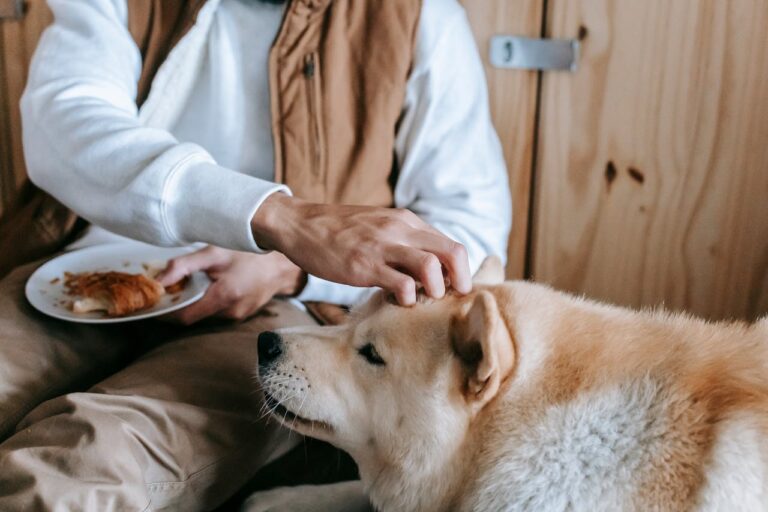
Have you ever wondered what your dog’s weight translates to in woofs and treats? As a pet owner, it’s essential to keep your furry friend in tip-top shape, and understanding their weight is crucial. In this guide, we’ll show you how to calculate your dog’s weight in woofs and treats to ensure they’re getting the right nutrition and exercise. When in doubt never hesitate to visit your local pet professionals to help construct the right plan of approach for you.
It all leaves you wondering, how much food should I feed my dog?

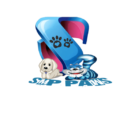
Understanding Your Dog's Weight
Before we dive into calculating your dog’s weight in woofs and treats, it’s essential to understand your pet’s weight. The appropriate weight range for dogs varies by breed, age, and activity level. An overweight or obese dog is at a higher risk of health problems such as diabetes, heart disease, and joint pain. The American Kennel Club provides a weight chart that can help you determine whether your furry friend is at a healthy weight.
Calculating Your Dog's Weight in Woofs and Treats
Now, let’s get into the fun stuff – calculating your dog’s weight in woofs and treats. It’s essential to remember that treats should be given in moderation and preferably as rewards during training sessions. Before diving into calculations, make sure you know your dog’s weight in pounds.
Woofs: Did you know that the average bark weighs approximately 0.5 – 0.6 ounces? That means it takes about 89 barks to equal one pound. So, if your furry friend weighs 20 pounds, they would be equivalent to approximately 1,780 barks.
Treats: One dog biscuit weighs approximately 0.2 ounces. There are approximately 23 dog biscuits in a cup. So, if your furry friend weighs 20 pounds, they would require approximately two cups of treats per week. However, keep in mind that treats should not exceed 10% of your dog’s daily caloric intake.
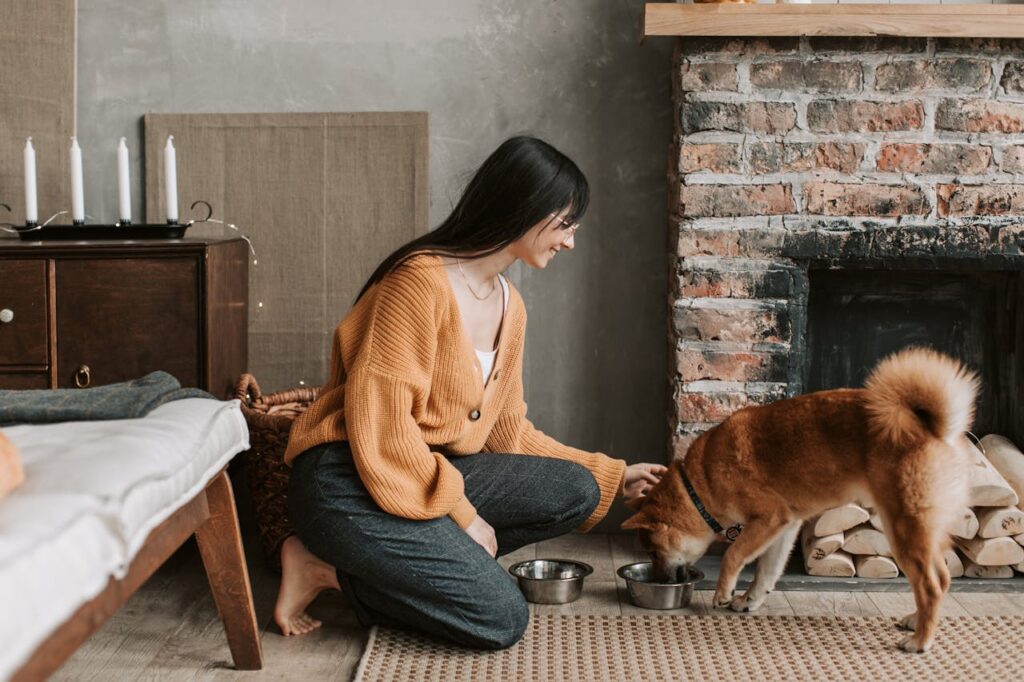
Tips for Maintaining Your Dog's Weight
Now that you know how to calculate your dog’s weight in woofs and treats, let’s talk about maintaining their weight. The first step is to consult with your veterinarian to determine the appropriate weight range for your dog. It’s also essential to measure your pet’s food and ensure they are consuming the appropriate amount based on their weight and activity level. Additionally, regular exercise is crucial in maintaining your furry friend’s weight. Consider a daily walk or playtime in the backyard to keep your pup active and healthy.
If you’re a pet owner looking for information on how to calculate your dog’s weight in woofs and treats, then you’re in luck! For those in Santa Monica, CA, our local veterinarians are always ready to help you assess your pet’s weight and provide tips for maintaining their health.
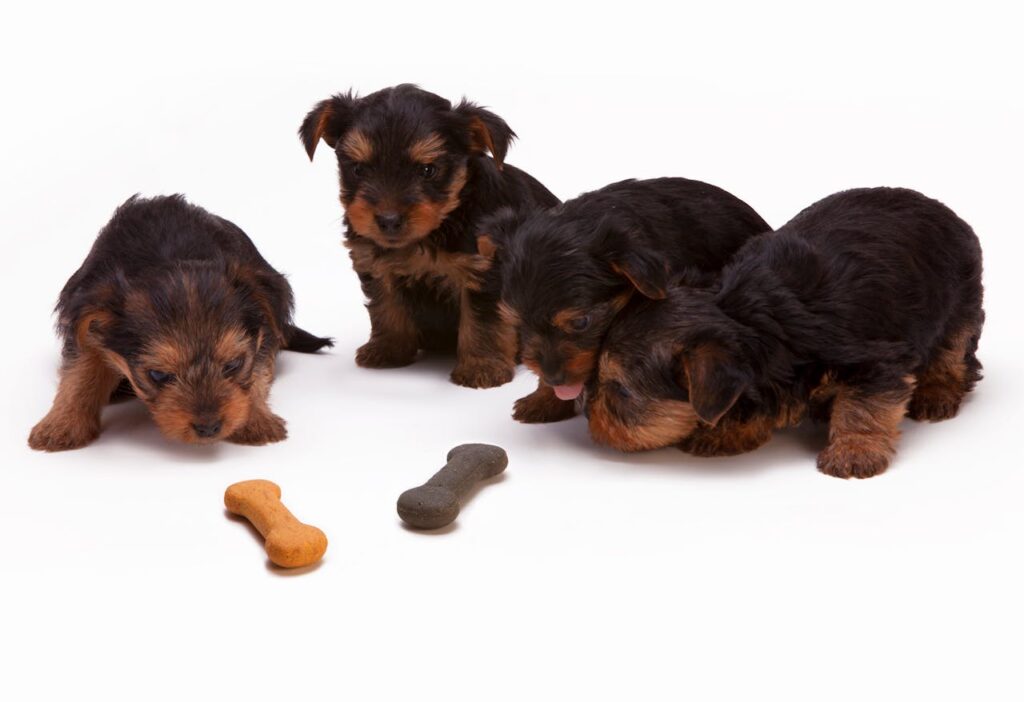
Why Does My Dog’s Weight Matter?
Dogs need to watch their waistlines just like their humans do, since excess weight gain can lead to several serious health problems in canines. Weight-related health problems can include:6
- Skeletal problems – Excess weight puts additional strain on your dog’s joints, which can lead to pain, osteoarthritis, and other mobility issues over time.
- Breathing difficulties – Being overweight can cause your dog to have difficulty breathing and may even lead to respiratory failure. This is especially important to watch for in flat-faced breeds like pugs and bulldogs.
- Heart disease – Carrying around extra weight puts a strain on your dog’s heart, which can eventually lead to heart failure.
- Diabetes – Obese dogs are more likely to develop diabetes, which can have serious consequences if left untreated.
- Liver disease – Fatty deposits in the liver can eventually lead to liver disease, which can be fatal.
Keeping your dog trim and fit also helps them stay happy and playful for as long as possible! If you’re concerned about your dog’s weight, talk to your veterinarian about safe strategies for healthy weight loss.
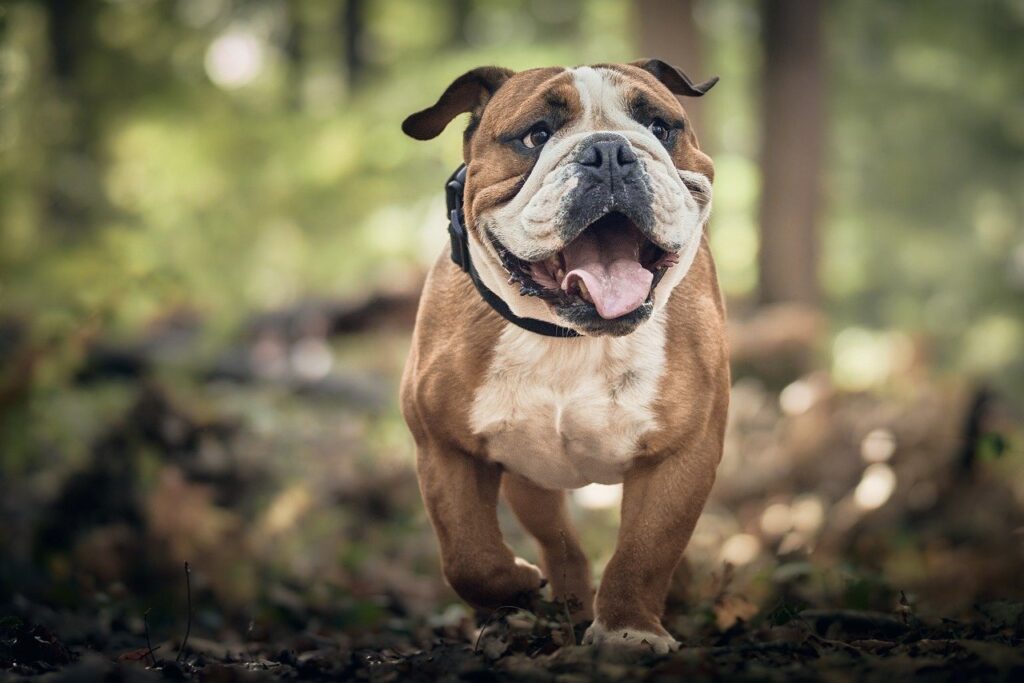
How Can I Tell if My Dog Is Overweight?
There are a few ways to check if your dog is overweight, normal weight, or underweight. Here are the signs to look for:3
- Underweight – A dog is too thin if you can easily see its spine, hip bones, and ribs from a distance. In fluffier dogs, place your thumbs on the dog’s spine and feel the sides with your fingers. If the vertebrae and rib bones are extremely prominent, the dog is too thin. Underfeeding leads to health problems over time such as osteoporosis, infections, and parasites. It also prevents proper development in puppies.3
- Normal or healthy weight – Looking down at your dog from above, check the shape of their back. You should be able to easily see the indentation of the waist just below the rib cage and above the hips. With your thumbs on your dog’s spine, you should be able to easily feel the ribs and some definition of the spine. Looking from the side, your dog’s stomach should tuck inward below the chest.
- Overweight – Again, looking down from above, check the shape of your dog’s sides. If there is no visible waist, or even an outward curve, your pup is too plump. When you feel for the ribs and spine, you may have to press firmly to feel the bones. In obese dogs, you may not be able to feel the ribs at all. You may also see visible deposits of fat in areas like the base of the tail, neck, and back.

Healthy Weight Tips for Every Dog
If Fido is carrying a few extra pounds, he’s not alone. According to the Association for Pet Obesity Prevention, over 50% of dogs in the US are overweight or obese.7 But don’t worry—there are plenty of things you can do to help your furry friend lose weight and get back to a healthy size.
Giving your pup the right amount of healthy food is only the first step toward shedding pounds. Plenty of exercise and entertainment is also important for getting you both off the couch:
- Exercise – Dogs need at least 30 minutes of exercise a day and more if they are particularly active breeds like Australian shepherds or border collies. Luckily, there are lots of ways to add more activity to your schedule: Spend time every day on training, sign up for an obedience class, head to the dog park, or set up a doggy play date with another pup parent.
- Treats – Treats should make up no more than 5% of their daily caloric intake.1 Table scraps should be a total no-no—human food just doesn’t fit canine nutritional needs.
- Mental stimulation – Dogs evolved to search for food, not just scarf it out of a bowl. Use food dispensing toys to encourage your dog to use their brain and burn calories while they eat. Giving your dog a challenge at mealtime can help with behavior problems too.
Give Your Best Friend the Best Care
To keep your dog in tip-top condition, don’t overfeed and do make sure your dog’s daily routine includes exercise, fun, and mental stimulation—and be sure to choose a high-quality food that’s approved by the Association of American Feed Control Officials.
Maintaining your pet’s weight is crucial to their overall health and well-being. While calculating your dog’s weight in woofs and treats is fun, it’s important to remember that nutritious food and regular exercise are key components in maintaining their weight. If you have any concerns, consult with your veterinarian. Together, you can ensure your furry friend is happy and healthy.
Sources:
- Association for the Prevention of Cruelty to Animals. Dog nutrition tips. https://www.aspca.org/pet-care/dog-care/dog-nutrition-tips
- Association for Pet Obesity Prevention. Dog and Cat Daily Caloric Needs. https://petobesityprevention.org/pet-caloric-needs
- National Academy of Sciences. Your dog’s nutritional needs. https://nap.nationalacademies.org/resource/10668/dog_nutrition_final_fix.pdf
- Waltham. Essential nutrition for cats and dogs, second edition. https://www.waltham.com/sites/g/files/jydpyr1046/files/2020-08/Essential%20cat%20and%20dog%20nutrition%20booklet%20V2%20-%20electronic%20version.pdf
- VCA Animal Hospitals. Feeding times and frequency for your dog. https://vcahospitals.com/know-your-pet/feeding-times-and-frequency-for-your-dog
- VCA Animal Hospitals. Obesity in dogs. https://vcahospitals.com/know-your-pet/obesity-in-dogs
- Association for Pet Obesity Prevention. 2021 press release & summary of the pet food, nutrition, & weight management opinion survey. https://petobesityprevention.org/2021
